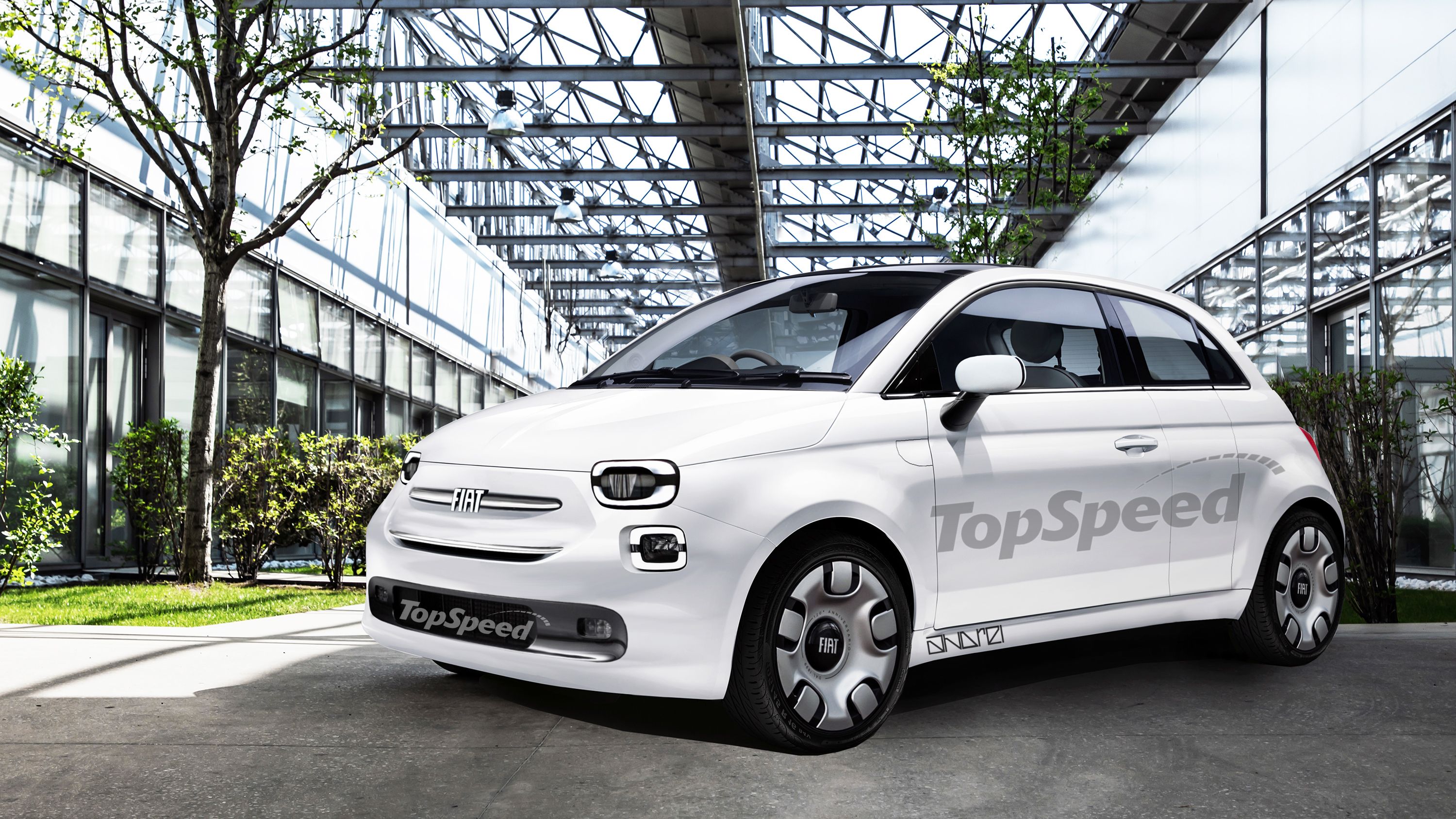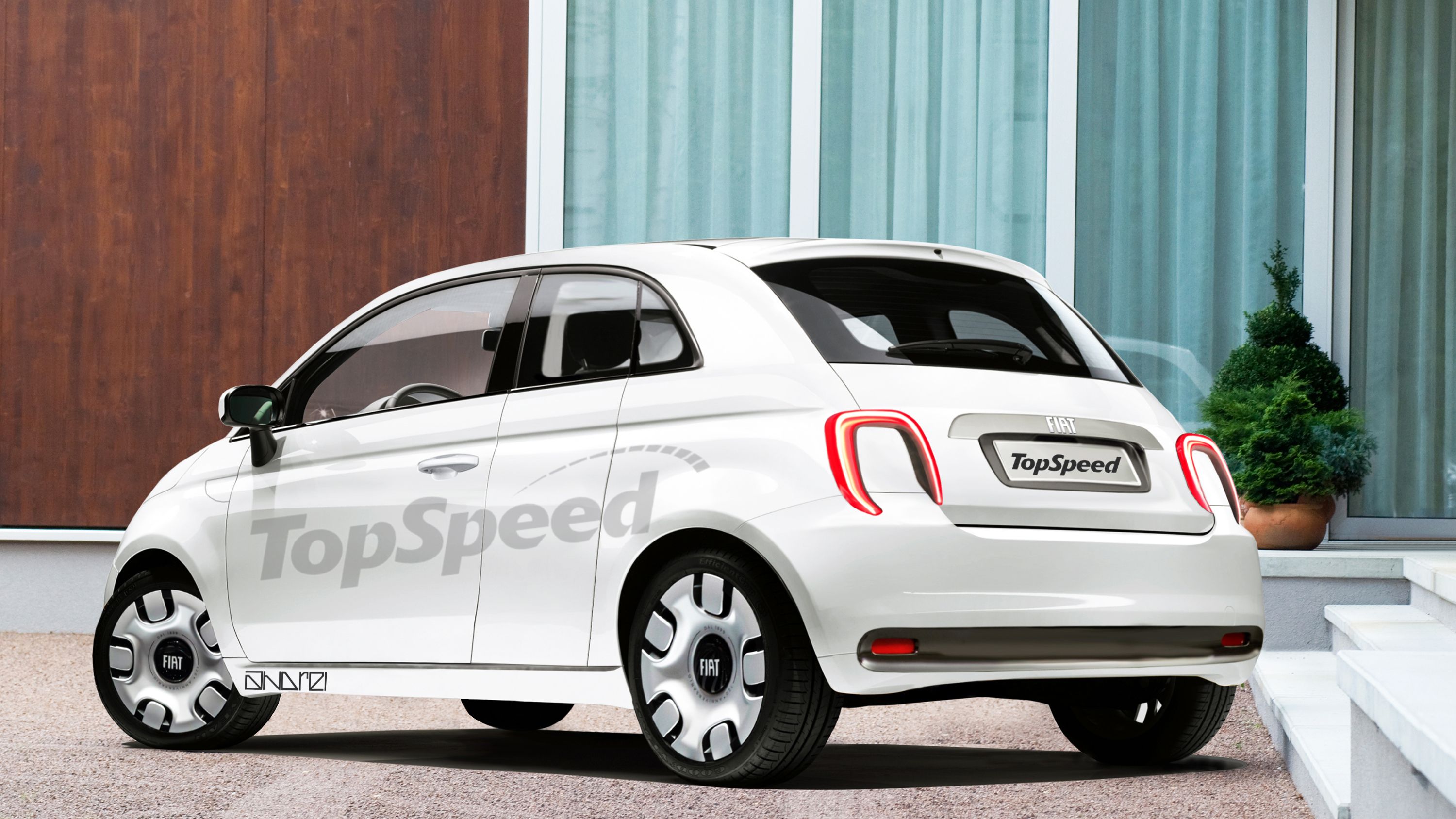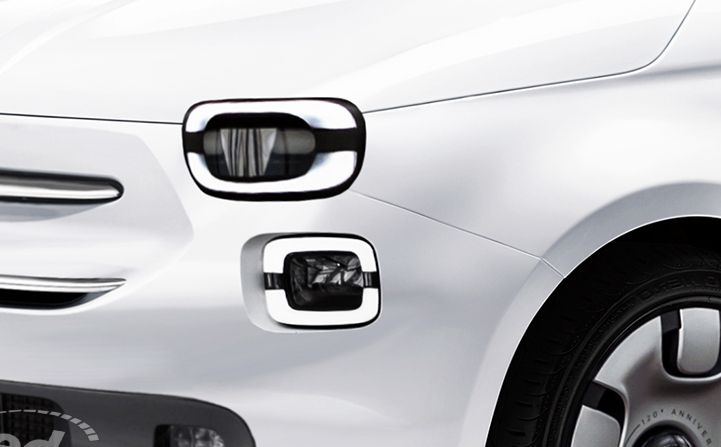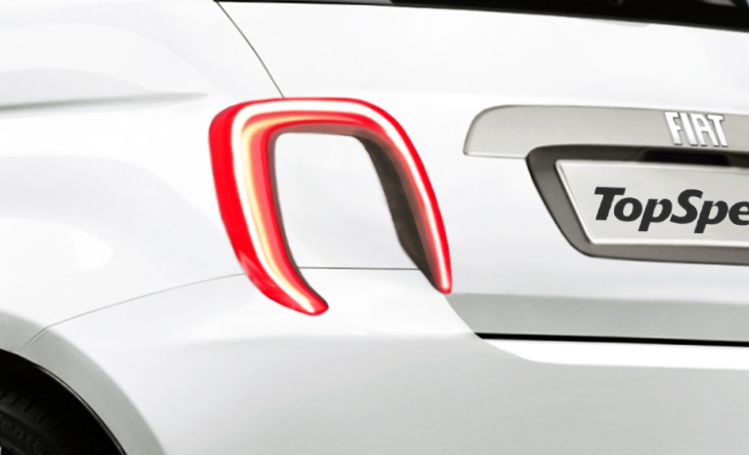The 2021 Fiat 500 is the second-generation version of the modern 500. The 2021 model will replace a car that has been around since 2007, so it's already 13 years old as of 2020. With the 500 discontinued in the United States and on its way out in Europe, a new-generation models will arrive in 2020.
Fiat has already confirmed that a new 500 is underway, but details remain scarce. We also know that on top of the usual hatchback and convertible models, Fiat will launch a five-door wagon that will revive the Giardiniera name. Let's find out more about the upcoming 2021 Fiat 500 in the speculative review below.
2021 Fiat 500
- Make: Array
- Model: 2021 Fiat 500
- [do not use] Vehicle Model: Array
Exterior
There are no official design studies, sketches, or hints as to how the 2021 500 will look like, but we have a feeling that Fiat won't make notable changes to the body work.
Just like the Beetle, the 500 is an iconic nameplate that goes back several decades and Fiat wants to keep the heritage alive. The outgoing 500 is heavily inspired by its ancestor from the 1950s and Fiat will probably keep most of its design cues alive.
But because the current 500 is obviously dated, Fiat will go with a handful of modern features. Up front, the 500 could have a slightly boxier design with rectangular headlamps at the corners. These will feature LED lights as standard. The daytime running lights placed lower in the fascia will carry over, but the old round lights could also be replaced with rectangular units.
The central fascia will grow a tad bigger, while the Fiat badge in the center could be replaced with lettering. The lower vent will evolve into a rectangular unit as well in order to match the lights and the overall design of the front fascia. Also expect minor changes to the front hood, perhaps a sportier design with a slightly raised center section and fins to the sides.
I don't expect many changes to the profile. The 500 looks like a cute bug and I bet it's exactly what both Fiat and fans of nameplate want. But Fiat will probably make changes to the roof and to the quarter window, as well as redesign the side skirt. Of course, the new 500 will feature new wheel designs, some of which will feature retro styling based on the original model.
Our designer imagined the rear fascia of the new 500 with minor changes. Because that's what we'll get. The slanted tailgate with the rectangular license place recess in the center is already a traditional feature so Fiat might leave that in place. Of course, it will change a few things here and there and add a new chrome piece atop the license plate for that premium look. As you can see, we changed the rectangular taillights with C-shaped LED bars built around the silhouette of the old lights. If Fiat goes with this design, it will be a nice touch.
Of course, the really big change here will be the addition of a Giardiniera model. Built between 1960 and 1968, the Giardiniera was a three-door wagon version of the 500. The little grocery getter survived until 1977 under the Autobianchi brand and now Fiat wants to revive it for the modern 500. The wagon will share design features with the hatchback, but it will have a longer wheelbase, a longer roof, and a modified tailgate. Unlike its spiritual predecessor, it will have five doors instead of three.
Interior
Fiat will redesign the interior of the 500 from the ground up, but we don't know much about it yet. That's because of the 500's unique status in the lineup, which results in a pretty unique interior that doesn't share design cues with other Fiat models. So there's no doubt about it that the new 500 will feature a funky interior that will set it apart from the pack.
Look for a dashboard with a glossy "face" that will match the color of the exterior. While the upper and lower sections will be black, the center fascia will be finished in brighter colors. So unless the exterior is black, it will have a two-tone layout.
Fiat will redesign the A/C vents and many buttons will disappear from the center stack, so it will boast a cleaner look.
The steering wheel will probably be shared with other Fiat models, but the instrument cluster should be unique. What's more, it will become fully digital. The layout should include digital projections of the rev counter and speed on the left and the right and an area for navigation and performance information in the center. The center console will grow wider and will include knobs that operate the infotainment system, as well as new cup holders and storage areas.
This should result in a bit more legroom for rear-seat passengers, but don't expect to stretch out like in a midsize sedan. Thanks to better packaging, the new 500 should also provide enhanced shoulder and hip room. Likewise, trunk capacity should increase by a couple of cubic feet.
Drivetrain
There's no official word as to what will power the next 500, but FCA’s Chief Marketing Officer, Oliver Francois, hinted in 2019 that it could be electric only. Speaking at the 2019 Geneva Motor Show, he said that "premium is the way we will go with the EV 500. A new 500, totally renewed. Totally electric. It’s kind of an urban Tesla, with beautiful style. Italianess, dolce vita in an electric car." However, Fiat could still offer conventional engines in the city car since the nameplate has such a strong tradition with small-displacement gasoline unit.
If this happens, it's safe to say that the 500 will continue to feature small-displacement units. Since there's no room for the engines offered in larger Fiat models, the 500 will probably continue with revised versions of the existing TwinAir and MultiAir gasoline units. The TwinAir is a tiny 0.9-liter, three-cylinder unit that generates up to 104 horsepower in the outgoing 500. Fiat also offered an 84-horsepower model, so I guess the least powerful model could act as an entry-level car.
On the other hand, Fiat could also keep the 1.2-liter four-cylinder (68 horsepower) in the lineup. Horsepower won't increase much for these engines. The 1.4-liter MultiAir will remain the range-topping engine with at least 120 horsepower. This unit will also power the Abarth version, in which it could generate more than 160 horses.
On the diesel front, Fiat still has the reliable 1.3-liter four-cylinder. Also a turbocharged engine, it generates 94 horsepower and 148 pound-feet of torque in the outgoing 500. Fiat could offer two versions: one with around 80 horsepower and one with close to 100 horses.
As for the electric version, we will see a much improved 500e model. Fiat introduced the 500e in 2013 with an electric motor rated at 111 horsepower and 147 pound-feet of torque. Fuelled by a 24-kWh, it returned a range of up to 87 miles according to EPA testing.
The new 500e will feature a completely different drivetrain, but details are still in the vault. However, there are rumors that Fiat will do things the Volkswagen way, meaning it could offer a modular battery stack like in the ID.3. This means that the 500e will be sold with batteries of different sizes, which means different outputs and ranges. The base model could run for around 100 miles per charge, while the range-topping version could provide more than 200 miles.
We know this from the Centoventi concept, which was unveiled with a small battery capable of only 60 miles per charge, but with the option to swap or add battery packs. Fiat claims that range can be increased to around 300 miles, so I'm guessing this is the technology the company will feature in the next-generation 500. Unlike its predecessor, the 500e will be a global vehicle and not just sold in California.
Pricing
The new-generation 500 will be a tad more expensive than the outgoing model. With the old hatchback priced from $16,495, expect the new 500 to come in at around $17,500 in base trim. The range-topping model will probably cost around $21,000 before options. The all-electric 500e will be the most expensive. The current model starts from $33,460, so the redesigned EV should cost at least $35,000 before options and incentives.
Competition
Mini Cooper
With the Volkswagen Beetle out of production for 2020, the Mini Cooper remains the only true competitor for the 500. And by true competitor I mean that it's a modern iteration of a classic legend, its exterior design is based on its historical predecessor, and it features a funky interior. It also boasts a somewhat premium price tag, even though it's not necessarily fancier than other hatchbacks from this niche. In short, the Mini Cooper is more of a fashion statement rather than a daily driver, just like the Fiat 500.
The Mini Cooper is now in its third generation, which was launched back in 2013. It's a bit long in the tooth, but a new-generation version is just around the corner. Meanwhile, the existing Cooper is sold with a 1.5-liter three-cylinder or a 2.0-liter four-cylinder in the U.S. The mill in the base Cooper, a three-cylinder, delivers 134 horsepower and 162 pound-feet of twist. The Cooper S cranks out 189 horsepower and 207 pound-feet of torque, while the beefed-up four-banger in the John Cooper Works variant generates 228 horses and 236 pound-feet.
Should the next-gen Fiat 500 be an all-electric car only, it will go against the Mini Cooper SE. Powered by an electric motor and a battery, this model delivers 181 horsepower and 199 pound-feet of twist. It can travel for up to 168 miles on a single charge. Pricing for the Mini Cooper starts from $23,400, so it's a bit more expensive than the upcoming Fiat 500.
Read our full review of the 2020 Mini Cooper
Final Thoughts
The Fiat 500 made a great comeback in 2007. With a design based on the original city car combined with modern Italian flair and solid engines, the 500 survived for no fewer than 13 years alongside strong competition from the Mini Cooper and the Volkswagen Beetle.
But it is now time for a big change. The market has shifted dramatically in the last 15 years and the existing 500 has fallen behind in many departments. But while Volkswagen chose to drop the Beetle and Mini made the Cooper considerably larger, Fiat seems keen to hang onto the same old recipe. And this is good news for old-school enthusiasts that still want a compact city car that's nimble and somewhat fancy. The vibe won't be quite the same if Fiat drops gas and diesel engines and turns the 500 into an EV, but the nameplate will survive if performance and technology remains solid compared to what the competition has to offer.








